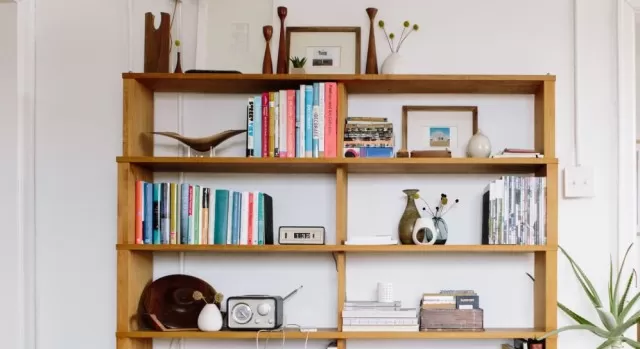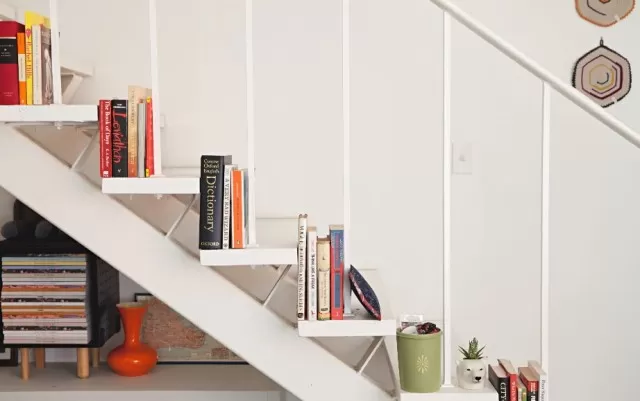If you have a passion for reading or if books have found their way into your home over the years, it’s essential to establish proper storage solutions.
If you have a passion for reading or if books have found their way into your home over the years, it’s essential to establish proper storage solutions to prevent clutter and protect your books from damage.
Whether you and your family members are book enthusiasts or you have sentimental attachments to your collection, organizing your books is a worthwhile endeavor.
Books often occupy a significant portion of our possessions, which is why Marie Kondo includes them as a category in her renowned decluttering method.
However, Kondo acknowledges the value of books and allows them to remain in your space as long as they are well-organized.
Many Best Books Storage Ideas

If you’re seeking inspiration for showcasing your hardcovers and paperbacks or simply want to revamp your current book storage system, the following ideas can guide you in finding creative and functional ways to organize and display your beloved books.
Arrange Books by Color.
Organizing your bookshelf by color has become a popular trend, with people using the ROYGBIV method to create a visually pleasing display.
This method not only adds an aesthetic touch to your Living Room bookshelf but can also be advantageous for visual learners. If you have a strong memory for colors, finding a book becomes easier when you can quickly spot the desired color.
Additionally, a beautifully color-coded bookshelf may inspire you to keep your books organized and prevent them from piling up elsewhere in your home.
Make the Most of Available Space.
If you have a small book collection and limited space in your home, there are plenty of creative solutions available.
You don’t necessarily need built-in shelves or expensive bookcases. Look for existing shelving options or consider embarking on a DIY project to create customized storage for your books.
Utilize your fireplace mantel or maximize empty spaces by adding a shelf beneath a window. You can also reserve a cubby on your kitchen island to keep your cookbooks easily accessible while cooking.
Opt for Small Book Stacks.
If your book collection is relatively small, consider using the books themselves as storage.
Instead of using a bookcase, stack a few books on your entryway console, dining room buffet, or writing desk. When stacking books horizontally, limit the stack to two or three books to ensure easy access and prevent excessive weight on the book spines.
You can also use the surface of stacked books to organize small items like keys and sunglasses. Just make sure not to place any decorative items on top of the book you’re currently reading to avoid constant rearranging.

Combine Books with Decorative Items.
Integrating books with home decor pieces can create a balanced and visually appealing display while saving space.
Instead of hiding your favorite family photo or a beautiful vase in a cabinet, give them a prominent spot on a shelf alongside your books. For a cohesive look, choose books that match the color palette or adhere to a specific theme or style, such as coastal.
If you have books that you don’t plan on rereading anytime soon or those that don’t fit vertically, you can lay them horizontally for added variety.
Utilize the Space Under the Stairs.
The area under a staircase often ends up as a neglected storage space filled with miscellaneous items.
Instead, transform it into a functional book storage area. If you’re skilled at DIY projects, you can build shelves under the stairs.
Alternatively, add a freestanding bookshelf to the space to make it easily accessible. Since the height of this storage space is usually low, it works well for storing children’s books.
You can even create a mini playroom by adding a few favorite toys alongside the books.
Embrace Floor-to-Ceiling Bookshelves.
For avid readers with an extensive book collection, maximizing storage is crucial.
Consider installing floor-to-ceiling bookshelves in rooms like the living room, den, library, or even your bedroom if that’s where you prefer to read. To reach the top shelves, incorporate a rolling library ladder on a track, which not only adds functionality but also enhances the aesthetic appeal.
Enhance the reading experience by including a cozy window seat or comfortable leather chairs where you can curl up with your books.
The advantages of organizing books by genre

To provide your child with a competitive edge and a solid educational foundation, organizing books and learning materials by genre can be immensely beneficial.
Here are a few reasons why organizing materials in this way is important:
Creating and Applying Connections: When books within a genre are grouped, children can start recognizing common elements and themes shared by those books.
For example, if a child reads multiple biographies, they will notice similarities in the structure, such as the inclusion of background information, challenges faced by the subject, and reasons for their significance. This ability to identify similarities and make connections helps them understand and make sense of future books within the same genre.
It develops critical thinking and problem-solving skills necessary for future success.
Boosting Reading Comprehension: By reading books sorted by genre, children become familiar with the plot structures and important elements unique to each genre.
They learn to navigate and comprehend larger amounts of information. For instance, if they know that historical fiction always emphasizes the significance of the setting, they will actively search for context clues that indicate the period or historical events in the story.
Similarly, if they know that biographies present information in chronological order, they will pay close attention to the beginning of the book to gather details about the subject’s birthplace. This genre-specific comprehension helps children extract relevant information and enhances their ability to understand and recall main events and details.
Developing Critical Thinking: Organizing materials by genre exposes children to unfamiliar information and encourages them to comprehend and make sense of it.
For example, if every informational text about animals includes facts about their habitats, children will recognize that any place an animal calls home is considered its habitat, even if they are unfamiliar with the specific ecosystem or environment. This process of abstracting information and understanding complex concepts supports critical thinking skills and problem-solving abilities.
By organizing books and learning materials by genre, you facilitate the development of your child’s reading comprehension skills, foster the ability to make connections and identify common elements, and lay the foundation for critical thinking and problem-solving capabilities.
*The information is for reference only.